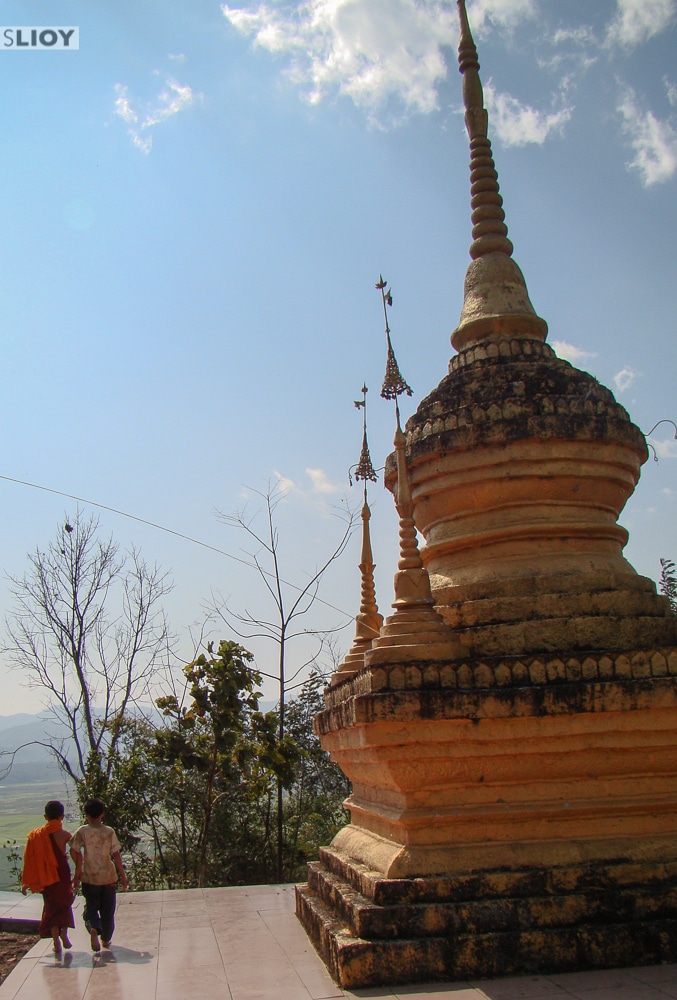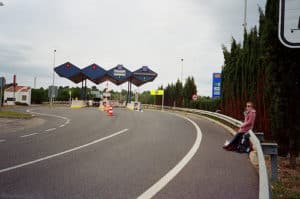Introducing: China’s Xishuangbanna Region
Though part of Yunnan, one of China’s most beautiful and interesting provinces for travelers, the Xishuangbanna prefecture in the south of the province sees nowhere close to the number of visitors of favorites like Lijiang and Tiger Leaping Gorge. There are wild rainforests, abandoned tourist towns, delicious food, and enough cultural mixing to deceive even the most jaded SouthEast Asia expert. This is also the home to the upper reaches of the Mekong River, that artery that controls so much of life in that region.
One of the most obvious visual differences between here and the rest of China is in the center of religion, which resembles the temples of Thailand and Laos much more than those of Beijing. The temples are filled with orange-clad monks, often of a very junior age, and only the rare handful of tourists each day that manage to make their way via hitchhiking or private transport. This itself is also peculiar when traveling in China – more often the domain of hordes of humanity than small quiet pockets of near-solitude.
I ended up exploring this region by buying a small motorbike/scooter in the regional capital, Jinghong, and driving through the province and down to the border with Laos. There is some small public transport presence in the region, but travelers I discussed it with found it often completely impossible to get to where they wanted but slow and frustrating even at the best of times.
If you do take the time to really explore the area, whether by public or private transport (or even just hitching), you’ll find lots of small corners of religion and community and people really interested to share their culture. This occasionally takes the shape of ‘cultural parks’ that serve as a sort of human zoo for indigenous cultures, but these are easy enough to avoid in favor of real interaction in the less visited parts of the province. Note that English is not widely-spoken here, however, so some Mandarin would be a boon. This region is particularly good as a transition between China and SouthEast Asia, taking the trip overland and getting some visual indication of how the cultures and landscapes and languages and food options all slowly shift from one region to another as you wind your way up towards the source of the Mekong.
Do you like incredible desserts? Make sure to tried the ‘friend banana and egg pancake things’ from the street stalls in Jinghong. We lovingly referred to them as ‘heartstoppers’, and not just because of the cholesterol content.







Hi Stephen,
The region sounds really great, I am going to Yunnan for a month in August-September from Fujian but I wont have any car/transportation/cant afford much other than public transport Do you think you could give me more info on the places you thought were worth it in the region because a lot of my research on the internet just ended up with those cultural parks which is really not my thing. It would just help to have an idea of where I would want to head. I know Mandarin so thats alright but just to not waste time there ending up in toursity overpriced stuf.f
Thanks a lot, if its too much of trouble to detail this, don’t worry, it sounds great anyways and I hope you enjoyed it!
Cannelle
Hi Cannelle, Are you looking for only recommendations for Xishuangbanna, or for all of Yunnan?
Thanks so much for your reply. Well I was going to go to Xishuangbanna but i think I wont have time I only have a month in Yunnan and want to take my time in the region so I might stick to the more Northern parts 🙂 So if you have any tips or places you think are definitely worth it in Yunnan in general that would be great to know. For now I have planned Dongchuan (although I cant tell how touristy it is from the internet…) and villages around Dali and Lijiang on Travel Cathay’s blog (http://travelcathay.com/). However, also I really want to see nice landscapes and rice terraces in addition to villages but all I have found is information about Yuanyuang rice terraces which looks horribly crowded… so if you have any tips about lesser known areas that would be sooo great. I went to Yunnan 7 years ago but I can guess its changed a lot and don’t want to be disapointed in this beautiful region ! 🙂
Also I speak intermediate Mandarin and am used to travelling alone in lesser known areas so don’t hesitate if you know any that are interesting 🙂